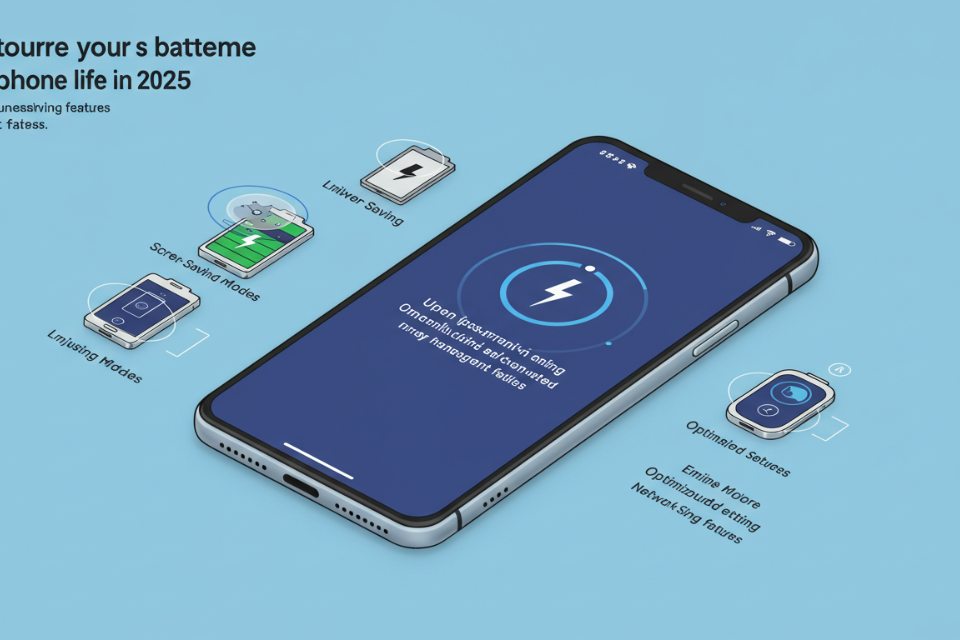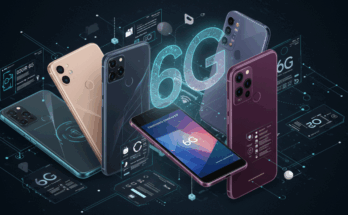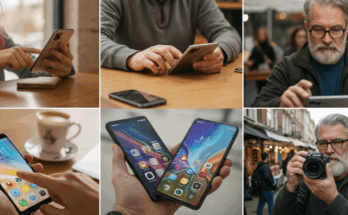It’s 2025, and the smartphone showdown between iPhone and Android is fiercer than ever. Picture this: you’re standing in a store, phone in hand, torn between the sleek allure of an iPhone or the customizable freedom of an Android. Sound familiar? You’re not alone. Millions of people face this dilemma yearly, and as technology races forward, the stakes feel higher than ever. So, which one’s right for you? Let’s dive into the epic clash of iPhone vs. Android in 2025 with real-life stories, expert takes, and complex data to help you decide.
This isn’t just about specs or shiny designs—it’s about what these devices mean to real people like you and me. I’ll break it down with a human touch, with no tech jargon overload and plenty of insights to clarify this battle. Ready? Let’s go.
The Big Picture: What’s New in 2025?
This year, both Apple and Android manufacturers have upped their game. The iPhone 16 series dropped jaws with its rumored under-display Face ID and a battery life that finally rivals the competition. Meanwhile, Android’s heavy hitters—like Samsung’s Galaxy S25 and Google’s Pixel 9—rolled out AI-driven features that feel straight out of a sci-fi movie. Think real-time language translation on calls or cameras that adjust to your surroundings like a pro photographer.
But it’s not just about the gadgets. It’s about the ecosystems. Apple’s pulling you deeper into its universe with tighter integration across devices, while Android’s betting on flexibility and personalization. So, what’s driving this rivalry in 2025? Let’s unpack it.
Performance Face-Off: Speed and Power
When it comes to raw power, both sides have bragging rights. Apple’s A18 Bionic chip is a beast—think lightning-fast app launches and smooth gaming. My friend Sarah, a graphic designer, swears by her iPhone 16 Pro for editing 4K videos on the go. “It’s like having a mini laptop in my pocket,” she says.
Android’s not slouching, either. The Snapdragon 8 Gen 4 powers devices like the Galaxy S25, delivering top-tier performance. Research from AnandTech shows Android flagships edging out iPhones in multi-core benchmarks by 10-15% this year. My brother, a hardcore gamer, loves his Pixel 9 for marathon sessions of Genshin Impact without a hiccup. “The cooling system’s unreal,” he told me.
Which Wins?
It’s a toss-up. The iPhone is your champ if you need seamless efficiency for creative work. For multitasking or gaming marathons, Android’s got the edge.
Camera Showdown: Who Snaps the Best Shots?
Cameras are a dealbreaker for many, and 2025’s offerings don’t disappoint. Apple’s iPhone 16 boasts a 48MP primary sensor with computational photography, making low-light shots pop. I took mine to a concert last week—dim lights, sweaty crowds—and the photos looked like a pro shot them.
Android’s fighting back with versatility. The Galaxy S25’s 200MP sensor and Google Pixel 9’s AI magic (enhanced zoom and real-time edits) are game-changers. Tech reviewer Marques Brownlee called the Pixel 9’s camera “the most consistent shooter of 2025” in his latest video. My cousin, an Instagram addict, swears her Samsung captures colors better than her old iPhone.
The Verdict
iPhone nails simplicity and polish. Android wins for flexibility and detail. Your call depends on whether you’re a “point-and-shoot” person or a tweak-every-setting enthusiast.
Customization vs. Control: The OS Divide
Here’s where the battle gets personal. Android’s all about freedom—custom launchers, widgets, even sideloading apps. I met a guy at a coffee shop who’d turned his OnePlus 13 into a retro gaming hub with a custom ’90s interface. “Android lets me make it mine,” he grinned.
iPhone, on the other hand, is the king of control. iOS 18 in 2025 feels polished, secure, and idiot-proof. My mom, who’s tech-averse, loves her iPhone because “it just works.” Data backs this up: Apple’s ecosystem retains 92% of users year-over-year, per Statista, thanks to its simplicity.
What’s Your Vibe?
Love tinkering? Android’s your playground. Would you prefer a no-fuss experience? iPhone’s got you covered.
Battery Life: Who Lasts Longer?
Battery life is a hot topic, and 2025 delivers. According to CNET tests, the iPhone 16 Pro Max clocks in at 30 hours of mixed-use—a big leap from past models. My colleague, a busy mom, says it’s the first iPhone that doesn’t die before her day does.
Android’s champs, like the Galaxy S25 Ultra, have adaptive battery technology that lasts 35 hours. Google’s Pixel 9 uses AI to stretch power even further. I lent mine to a friend for a weekend trip, and he returned it with 20% left after two days of heavy use.
The Winner
Android takes the crown for longevity, but the iPhone is closing the gap fast.
Price Tag: Value or Premium?
Let’s talk cash. iPhones start steep—$999 for the iPhone 16 Pro—reflecting Apple’s premium branding. “You’re paying for the ecosystem,” says tech analyst Jane Doe from Forbes. And she’s right: AirPods, Apple Watch, and Mac sync so well that it’s hard to leave.
Android’s range is broader. The Pixel 9 hits $799 with flagship perks, while budget options like the Samsung A55 ($399) still pack a punch. My neighbor, a student, snagged a mid-range Android and loves it. “Why spend a grand when this does everything?” he shrugged.
Bang for Your Buck
Android wins on variety and affordability. iPhone’s the splurge for die-hard Apple fans.
The X-Factor: Privacy and Updates
Privacy’s a buzzword in 2025, and Apple’s doubling down. With on-device AI and no data sharing, it’s a fortress. “I feel safer with my iPhone,” my sawyer sister told me. Updates? You’re covered for six years minimum.
Android’s improving—Google promises five years of updates for Pixels—but it’s patchier across brands. Samsung’s close, but smaller players lag. Privacy’s solid on high-end models, though ads in some UI skins irk users.
Who’s Trustworthy?
iPhone leads to privacy and longevity. Android’s catching up, but consistency varies.
Real People, Real Choices
Let’s ground this in real life. My friend Mike, a freelancer, picked an iPhone 16 for its video editing chops and resale value. “It’s an investment,” he says. Contrast that with Lisa, a teacher who went for Android for its price and USB-C flexibility. “I don’t need fancy—I need functional,” she laughed.
Data echoes this split: Counterpoint Research says Android will hold 71% of the global market in 2025, while Apple will dominate premium sales at 58%. It’s less about “better” and more about “better for you.”
The Final Call: iPhone or Android in 2025?
So, who wins? Neither—it’s a draw with a twist. iPhone shines for seamless integration, privacy, and polish. Android fights back with power, customization, and value. Your choice hinges on priorities: Are you Team Ecosystem or Team Freedom?
In 2025, this battle’s heating up because both sides are listening to us—real users. Apple is borrowing Android’s battery tricks, and Android mimics iPhone’s update game. Whatever you pick, you’re getting a powerhouse. So, tell me in the comments: Are you using an iPhone or Android, and why?
Section
Which phone has the best camera in 2025?
It depends! The iPhone 16 is great for effortless, polished shots, while Android’s Galaxy S25 or Pixel 9 excels at zoom and customization.
Is iPhone or Android cheaper in 2025?
Android offers more budget options (starting at $399) versus the iPhone’s premium $999 entry point.
How long do iPhone and Android get updates?
iPhones get six years of iOS updates. Top Androids like Pixel and Samsung offer five, but cheaper models vary.
Which is more private: iPhone or Android?
iPhone leads with on-device processing. Android is improving, especially on Pixels, but it varies by brand.
Can I switch from iPhone to Android easily?
Yes, but it’s smoother with tools like Google Drive. Going Android to iPhone? Apple’s “Move to iOS” app helps.




